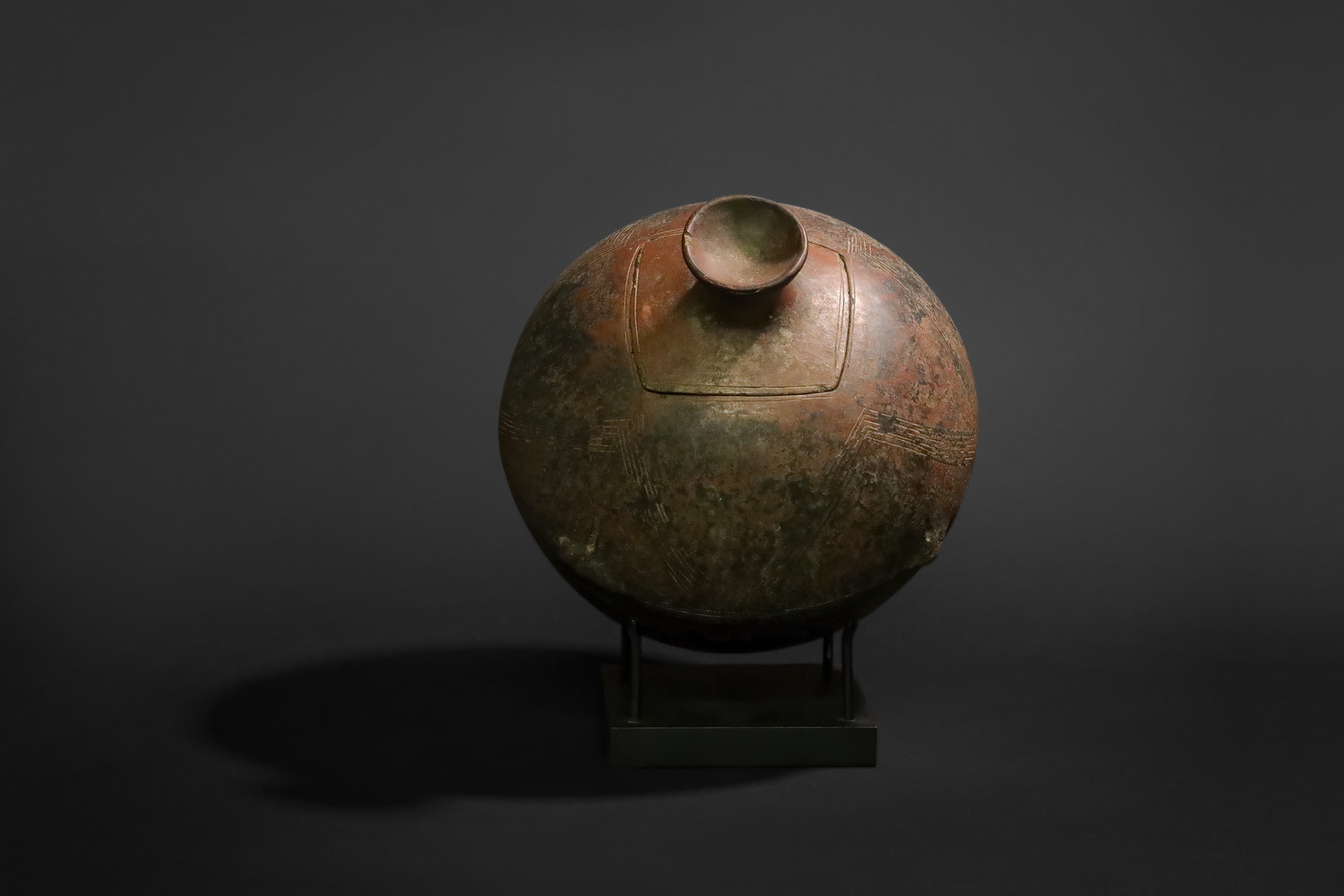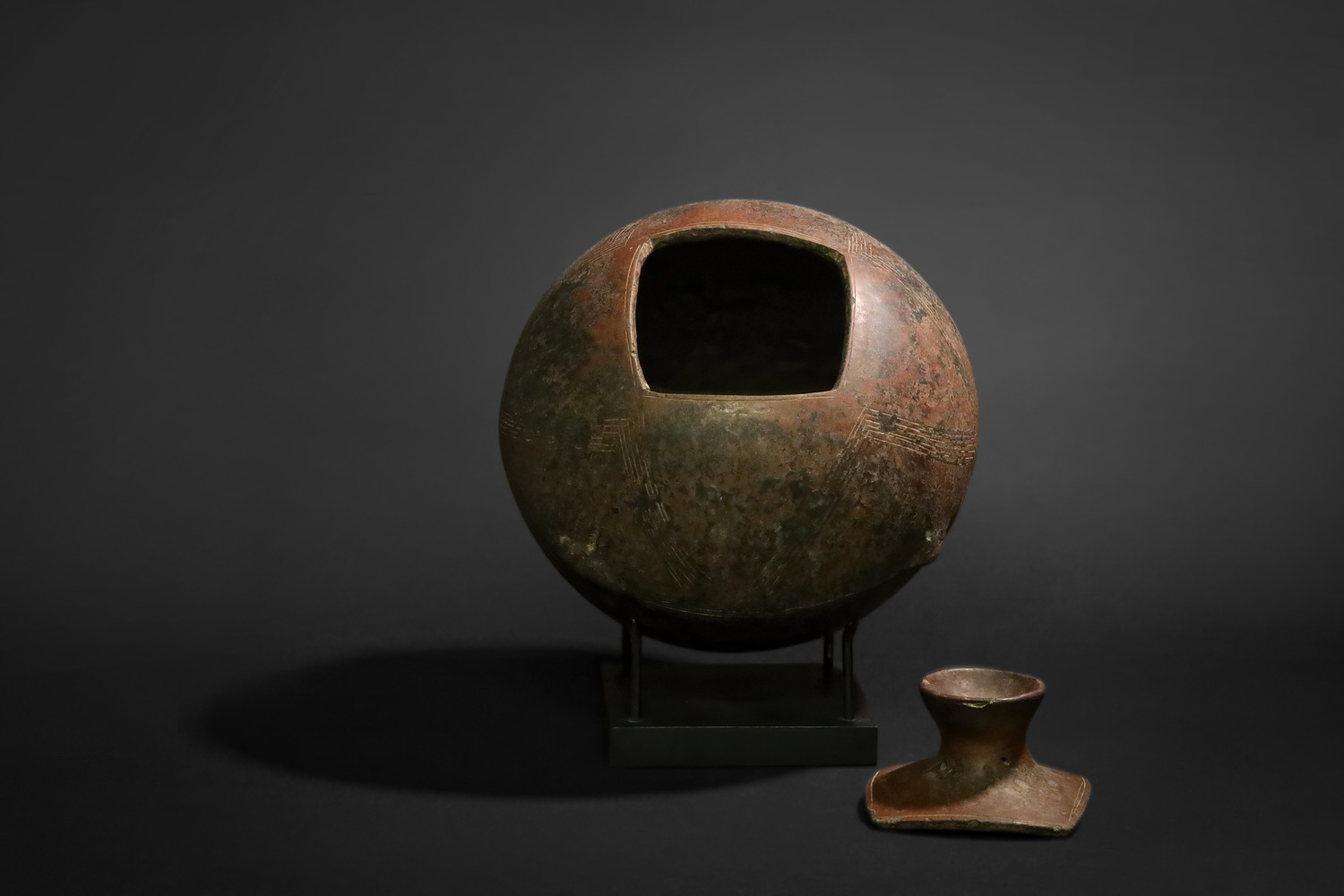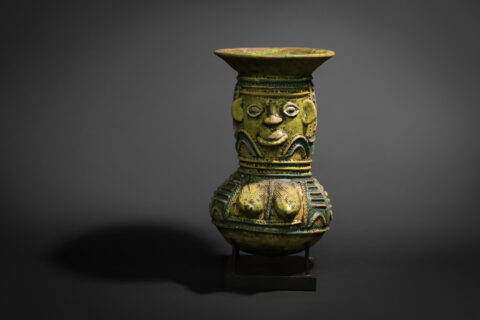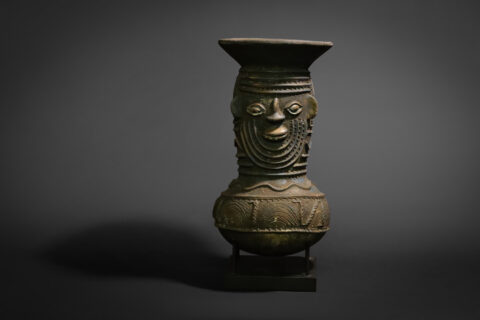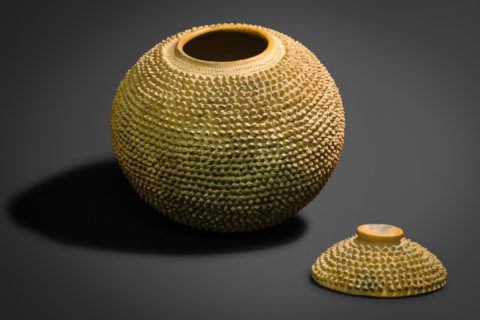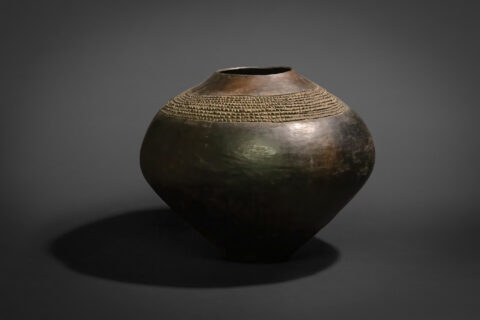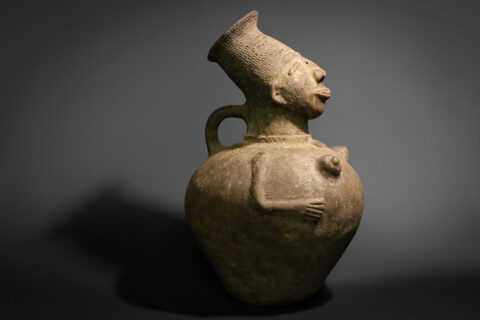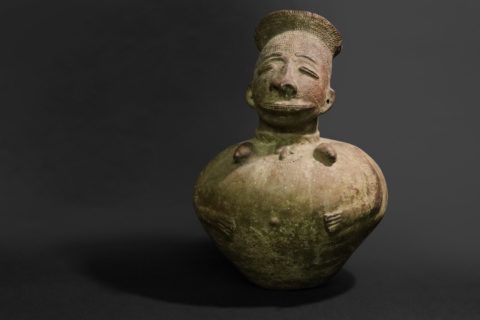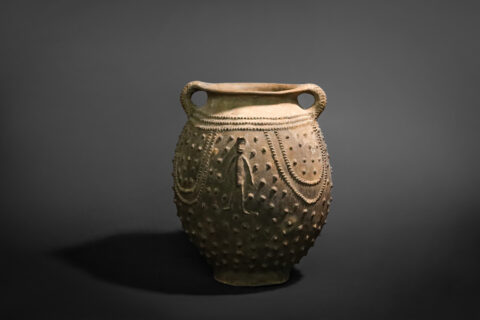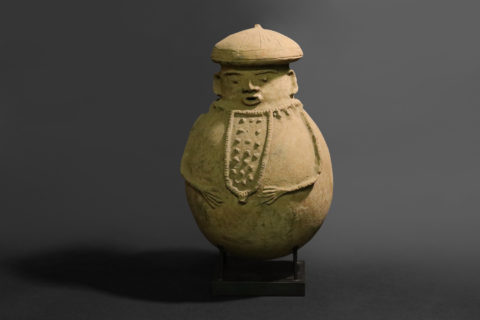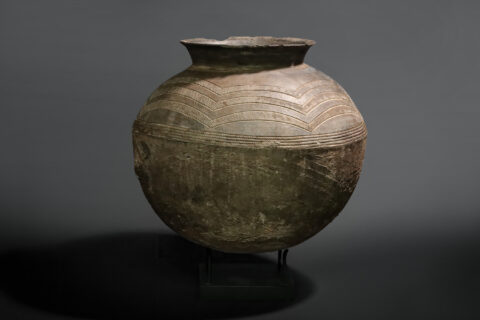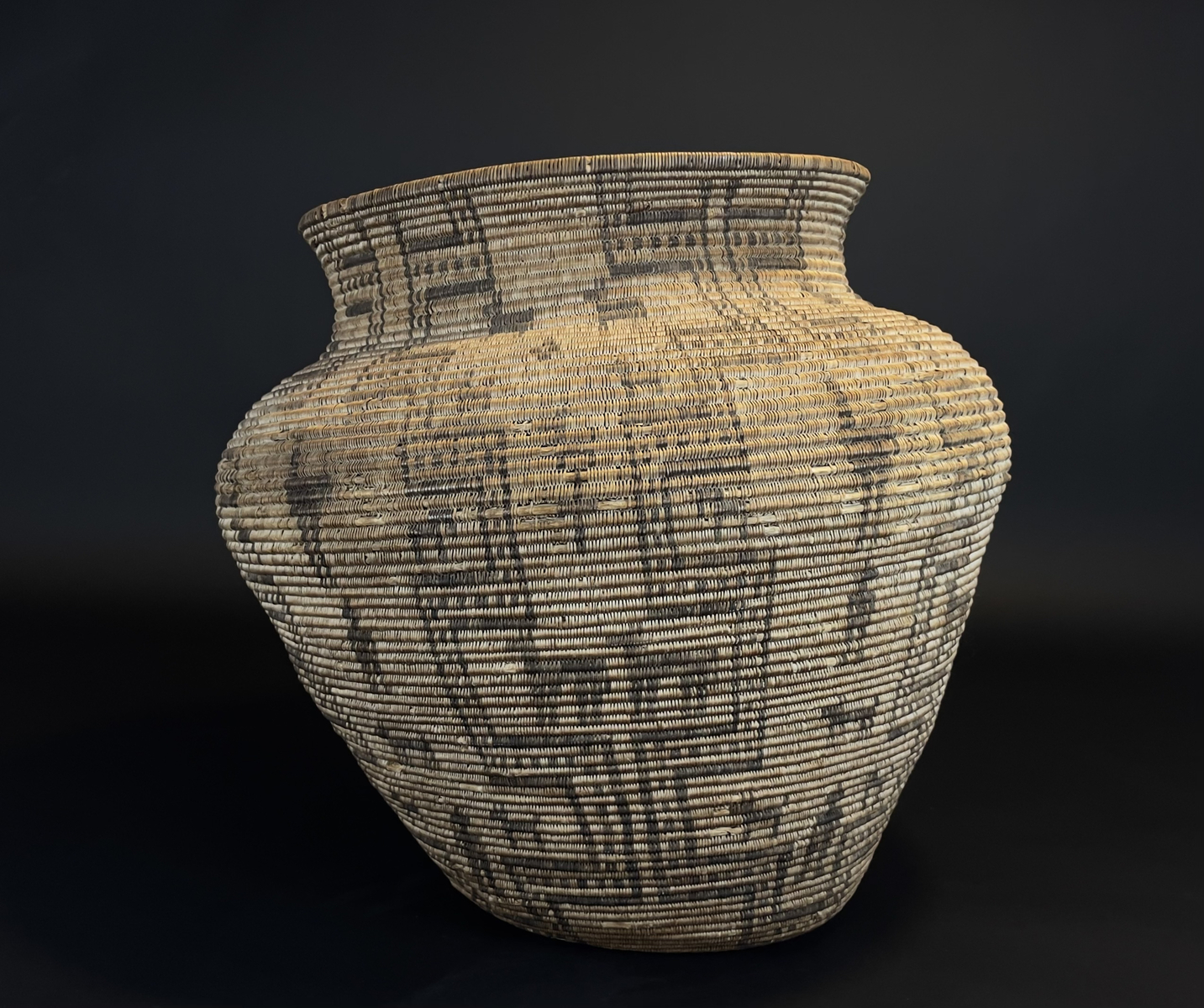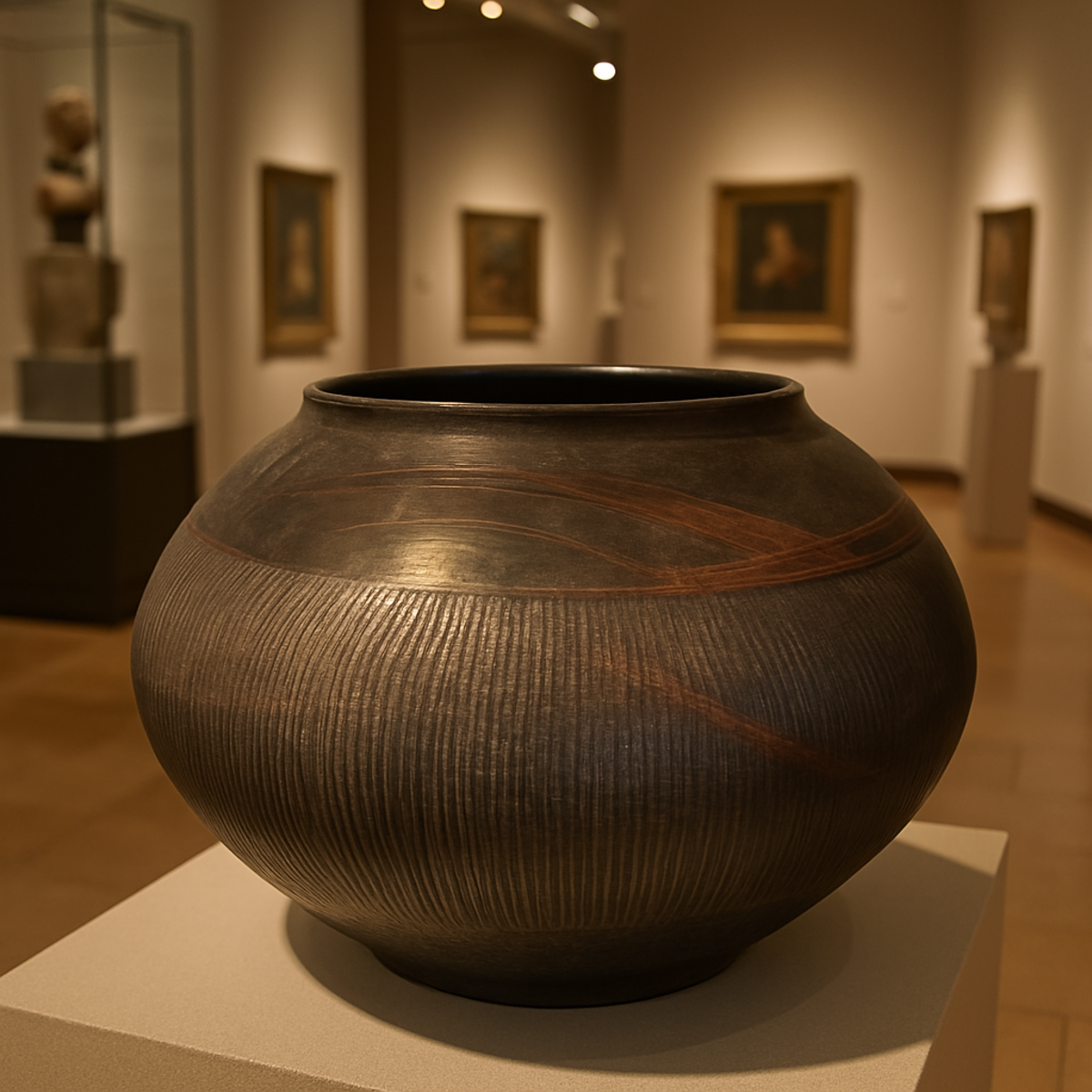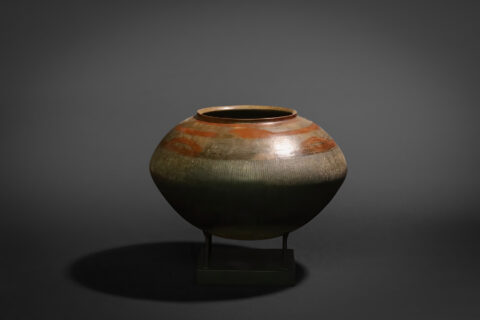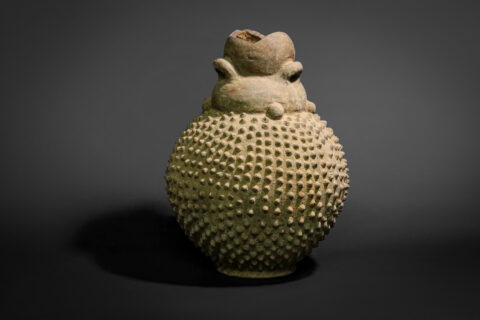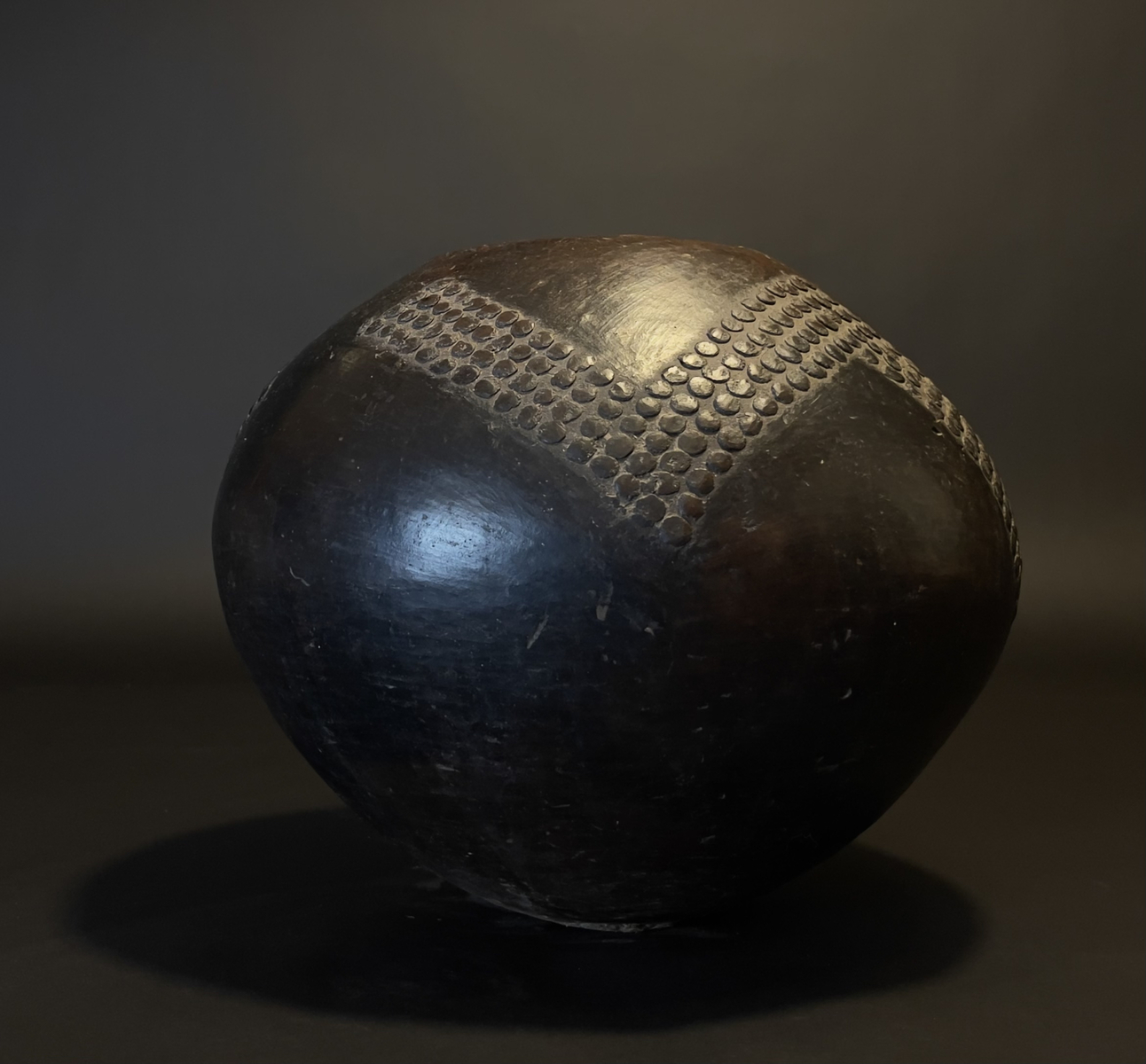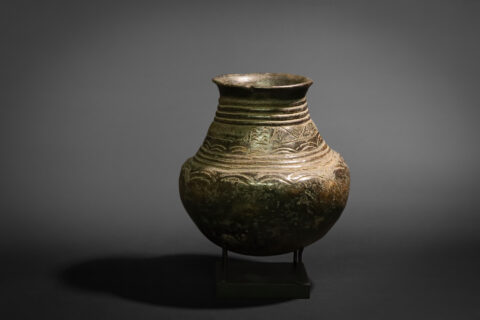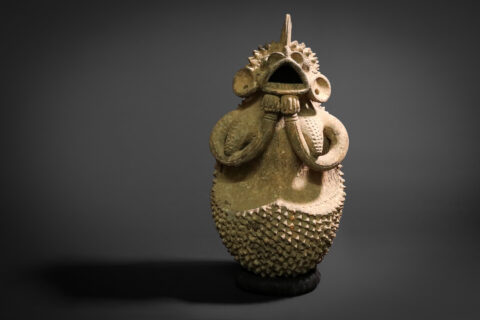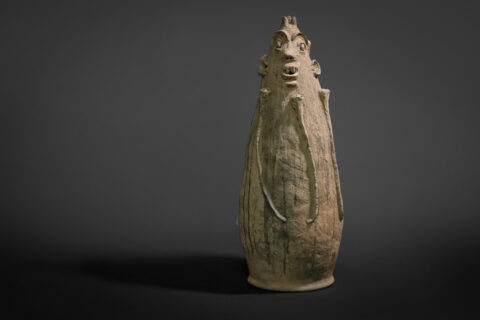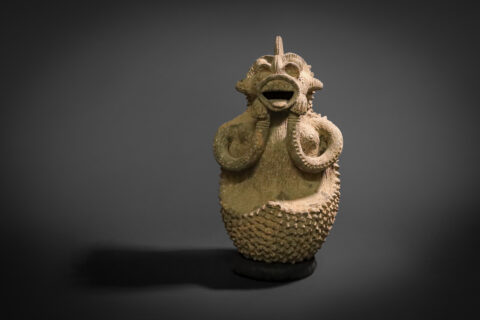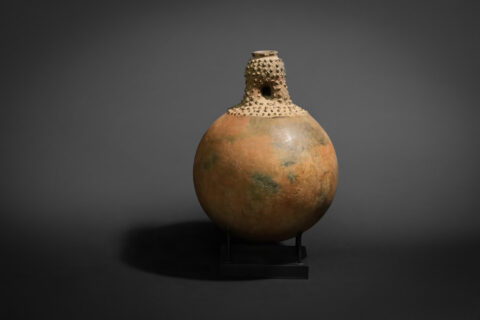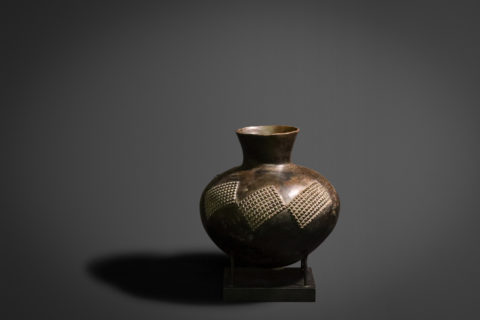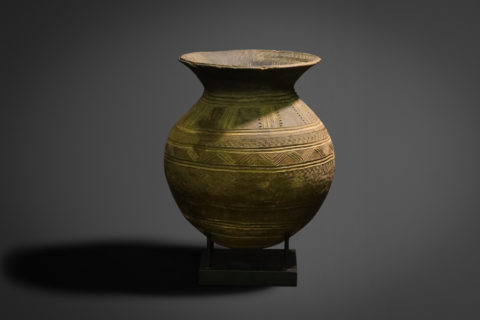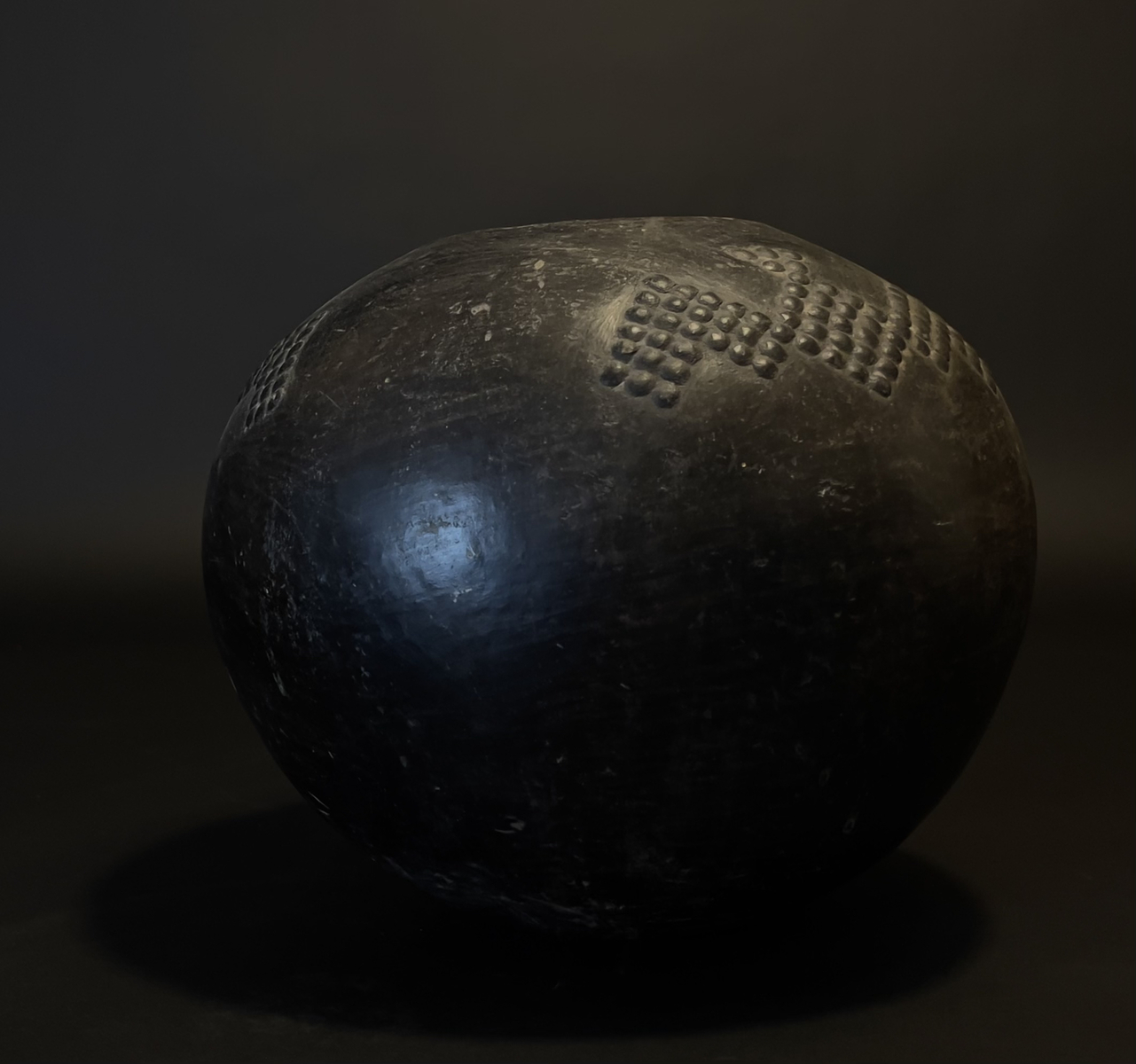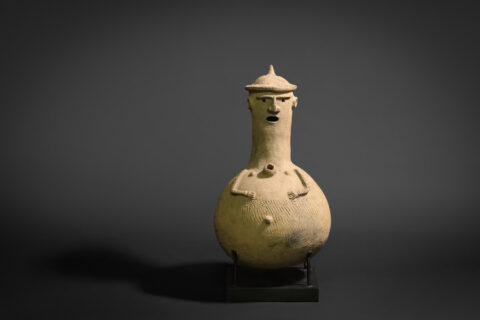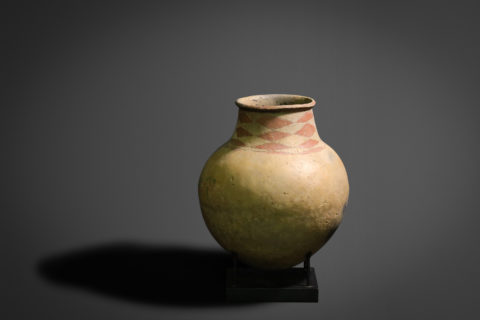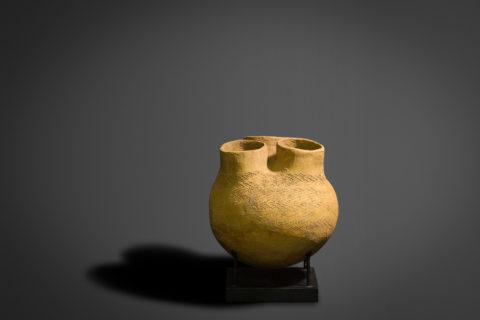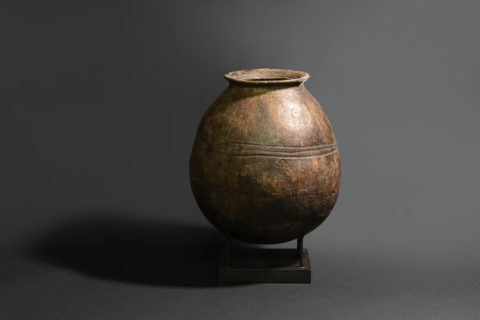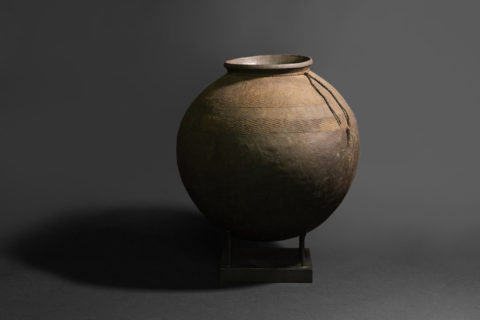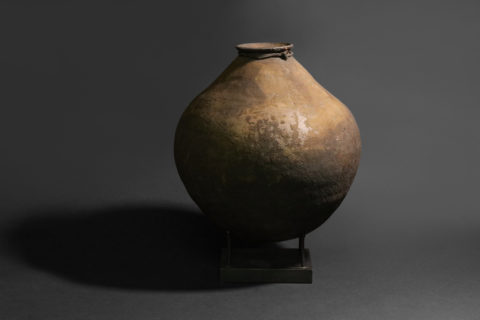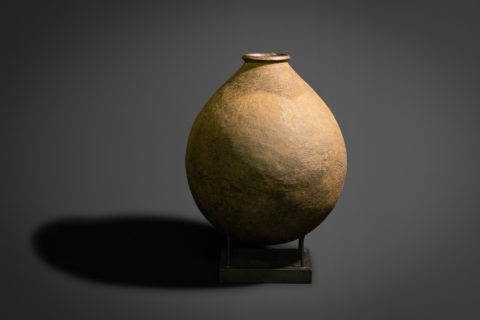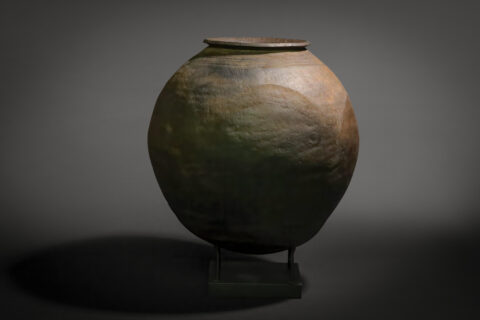Description
This magnificent terra-cotta vessel with a spherical shape and a unique square opening and corresponding lid was handcrafted by the Nanu People in Burkina Faso. The vessel’s square opening and striated triangles, adorned with decorative protrusions, align perfectly with the four corners of the lid, creating an intricate and functional design that helps to minimize evaporation and spillage.
The deep orange patina of the vessel hints at years of daily use, including being placed over a fire to cook soups and boil vegetables. The Nanu People’s intricate craftsmanship and attention to detail in creating this vessel is a testament to their long-standing heritage in the region and their commitment to their craft.
The Gur-speaking people of Burkina Faso are a diverse group of ethnic communities who share a common language, heritage, and tenure in the region. The Nanu People are one of the many distinct groups that make up this community and are known for their exceptional pottery-making skills. The Nanu people’s pottery has gained fame and recognition across the African continent for its unique and intricate designs, including the use of square openings, as seen in this vessel.
Pottery-making has been an integral part of the Nanu People’s culture for centuries, and it plays an essential role in their daily lives. They use their pottery for cooking, storing food, and for ceremonial and decorative purposes. The intricate designs and techniques used in the creation of their pottery have been passed down through generations, making the Nanu People one of the most skilled and imaginative pottery-makers in Africa.
In conclusion, this Nanu People’s terra-cotta vessel with a square opening and corresponding lid is a testament to the rich cultural heritage and skilled craftsmanship of the Gur-speaking people of Burkina Faso. Its intricate design and long-standing history of use highlight the importance of pottery-making to the Nanu People’s culture and their commitment to preserving their unique traditions for future generations.


